-
 Bitcoin
Bitcoin $117500
2.15% -
 Ethereum
Ethereum $3911
6.19% -
 XRP
XRP $3.316
10.79% -
 Tether USDt
Tether USDt $1.000
0.01% -
 BNB
BNB $787.2
2.24% -
 Solana
Solana $175.2
4.15% -
 USDC
USDC $0.9999
0.00% -
 Dogecoin
Dogecoin $0.2225
8.40% -
 TRON
TRON $0.3383
0.28% -
 Cardano
Cardano $0.7868
6.02% -
 Stellar
Stellar $0.4382
9.34% -
 Hyperliquid
Hyperliquid $40.92
7.56% -
 Sui
Sui $3.764
7.63% -
 Chainlink
Chainlink $18.48
10.66% -
 Bitcoin Cash
Bitcoin Cash $582.1
1.88% -
 Hedera
Hedera $0.2601
6.30% -
 Avalanche
Avalanche $23.33
4.94% -
 Ethena USDe
Ethena USDe $1.001
0.02% -
 Litecoin
Litecoin $122.3
2.04% -
 UNUS SED LEO
UNUS SED LEO $8.969
-0.27% -
 Toncoin
Toncoin $3.339
0.86% -
 Shiba Inu
Shiba Inu $0.00001287
4.30% -
 Uniswap
Uniswap $10.43
7.38% -
 Polkadot
Polkadot $3.861
5.08% -
 Dai
Dai $1.000
0.02% -
 Bitget Token
Bitget Token $4.513
3.41% -
 Monero
Monero $267.7
-6.18% -
 Cronos
Cronos $0.1499
4.14% -
 Pepe
Pepe $0.00001110
5.15% -
 Aave
Aave $284.9
8.28%
What are the liquidation rules of a Gemini contract? How to reduce liquidation risks?
Gemini's robust trading platform offers futures contracts, but understanding liquidation rules and using strategies like stop-loss orders can help traders manage risks effectively.
May 04, 2025 at 11:29 am

The Gemini exchange, known for its robust trading platform, offers futures contracts that allow traders to speculate on the future price of cryptocurrencies. Understanding the liquidation rules of a Gemini contract is crucial for any trader looking to engage in futures trading on this platform. Additionally, knowing how to reduce liquidation risks can help traders protect their investments and maximize their potential returns.
Understanding Gemini Futures Contracts
Gemini futures contracts are agreements to buy or sell a cryptocurrency at a predetermined price at a specified time in the future. These contracts are standardized and traded on the Gemini exchange, providing traders with the opportunity to leverage their positions. Leverage allows traders to control a larger position with a smaller amount of capital, but it also increases the risk of liquidation.
What is Liquidation?
Liquidation occurs when a trader's position is forcibly closed by the exchange due to insufficient margin to cover potential losses. This happens when the market moves against the trader's position, and the account's equity falls below the maintenance margin requirement. Liquidation is a risk management mechanism designed to protect both the trader and the exchange from further losses.
Liquidation Rules of a Gemini Contract
Gemini has specific rules governing the liquidation of futures contracts. Understanding these rules is essential for traders to manage their positions effectively.
Maintenance Margin Requirement: Gemini sets a maintenance margin requirement for each futures contract. If the account's equity falls below this level, the position is at risk of liquidation. The maintenance margin is typically a percentage of the total contract value.
Liquidation Price Calculation: The liquidation price is calculated based on the position size, entry price, and the maintenance margin requirement. For a long position, the liquidation price is the entry price minus the maintenance margin percentage. For a short position, it is the entry price plus the maintenance margin percentage.
Auto-Liquidation: Gemini employs an auto-liquidation mechanism to close positions that fall below the maintenance margin. This process is automated and occurs without the trader's intervention to prevent further losses.
Partial Liquidation: In some cases, Gemini may opt for partial liquidation, where only a portion of the position is closed to bring the account back above the maintenance margin requirement. This can help preserve some of the trader's position while mitigating risk.
How to Reduce Liquidation Risks
Reducing liquidation risks is a key concern for traders engaging in futures trading on Gemini. Here are several strategies to help minimize the likelihood of liquidation:
Use Stop-Loss Orders: A stop-loss order is an order placed with a broker to buy or sell once the stock reaches a certain price. Setting a stop-loss order can help limit losses by automatically closing a position if the market moves against it. On Gemini, traders can set stop-loss orders to trigger at a price above the liquidation price, providing a buffer against liquidation.
Monitor Margin Levels: Regularly monitoring the account's margin levels is crucial. Traders should keep an eye on their equity and ensure it remains above the maintenance margin requirement. Using Gemini's margin calculator can help traders understand how different market scenarios might affect their positions.
Reduce Leverage: High leverage increases the risk of liquidation. Reducing leverage can help lower the risk by requiring less margin to maintain a position. Traders should consider using lower leverage, especially when starting out or during volatile market conditions.
Diversify Positions: Diversifying across different assets and positions can help spread risk. Holding a diversified portfolio can mitigate the impact of a single position moving against the trader, reducing the overall risk of liquidation.
Stay Informed: Keeping up with market news and trends can help traders make informed decisions. Staying informed about factors that might affect cryptocurrency prices can help traders anticipate market movements and adjust their positions accordingly.
Practical Steps to Manage Liquidation Risks on Gemini
To effectively manage liquidation risks on Gemini, traders can follow these practical steps:
Set Up Alerts: Use Gemini's platform to set up alerts for when the account's equity approaches the maintenance margin level. This can provide early warnings and allow traders to take action before liquidation occurs.
Adjust Position Sizes: Regularly review and adjust position sizes based on market conditions and account equity. Reducing position sizes during volatile periods can help lower the risk of liquidation.
Use Risk Management Tools: Gemini offers various risk management tools, such as position limits and margin requirements. Utilizing these tools can help traders manage their exposure and reduce the risk of liquidation.
Practice with a Demo Account: Before trading with real money, practice using a demo account. Gaining experience in a risk-free environment can help traders understand how to manage liquidation risks effectively.
Monitoring and Adjusting Strategies
Monitoring and adjusting trading strategies is an ongoing process. Traders should regularly review their positions and adjust their strategies based on market conditions and performance.
Review Performance: Regularly review the performance of trading strategies and positions. Analyzing past trades can help identify patterns and areas for improvement.
Adjust Strategies: Based on performance reviews, adjust trading strategies as needed. Adapting to changing market conditions can help traders stay ahead of potential liquidation risks.
Stay Flexible: Flexibility is key in managing liquidation risks. Being willing to adjust positions and strategies can help traders respond effectively to market movements.
Frequently Asked Questions
Q: Can I avoid liquidation entirely on Gemini?
A: While it's impossible to avoid liquidation entirely, traders can significantly reduce the risk by using the strategies outlined above, such as setting stop-loss orders, monitoring margin levels, and reducing leverage.
Q: What happens to my funds if my position is liquidated on Gemini?
A: If your position is liquidated, any remaining funds in your account after covering losses and fees will be available for withdrawal. Gemini's liquidation process aims to minimize losses, but it's important to manage positions carefully to avoid significant losses.
Q: How quickly does Gemini liquidate positions?
A: Gemini's auto-liquidation process is designed to be swift to prevent further losses. The exact timing can vary based on market conditions, but the process is automated to ensure quick action when necessary.
Q: Can I set a custom liquidation price on Gemini?
A: No, Gemini does not allow traders to set a custom liquidation price. The liquidation price is calculated based on the position size, entry price, and the maintenance margin requirement set by the exchange.
Disclaimer:info@kdj.com
The information provided is not trading advice. kdj.com does not assume any responsibility for any investments made based on the information provided in this article. Cryptocurrencies are highly volatile and it is highly recommended that you invest with caution after thorough research!
If you believe that the content used on this website infringes your copyright, please contact us immediately (info@kdj.com) and we will delete it promptly.
- Tron's Sell-Off Spurs Altcoin Shift: What's Next for TRX?
- 2025-08-08 08:30:12
- Sleep Token's US Takeover: Thornhill Rides the 'Even In Arcadia' Wave
- 2025-08-08 08:30:12
- FTT Token's Wild Ride: Creditor Repayments vs. Market Drop - A New Yorker's Take
- 2025-08-08 07:10:12
- Floki Crypto Price Prediction: Riding the Robinhood Rocket or Just a Meme?
- 2025-08-08 07:15:12
- EigenLayer, Restaking, and Ethereum: Navigating the Hype and the Hazards
- 2025-08-08 06:30:12
- Super Bowl 59: Jon Batiste to Jazz Up the National Anthem
- 2025-08-08 06:30:12
Related knowledge

What are the specific maker and taker fees on KuCoin Futures?
Aug 08,2025 at 08:28am
Understanding Maker and Taker Fees on KuCoin FuturesWhen trading on KuCoin Futures, users encounter two primary types of fees: maker fees and taker fe...
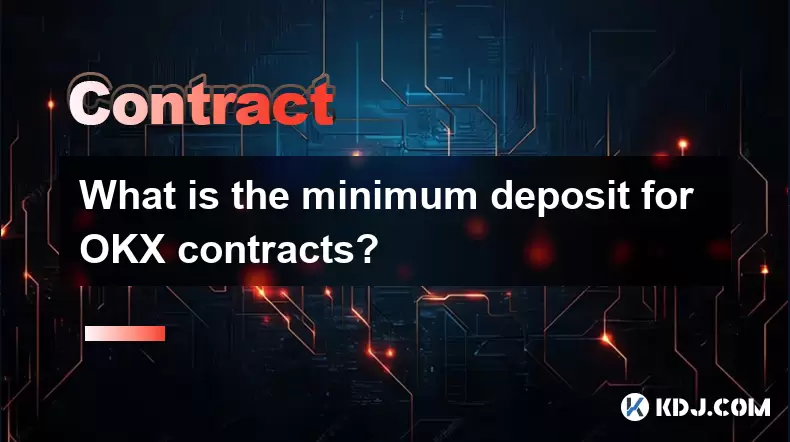
What is the minimum deposit for OKX contracts?
Aug 08,2025 at 07:00am
Understanding OKX Contract Trading BasicsOKX is one of the leading cryptocurrency derivatives exchanges, offering a wide range of perpetual and future...
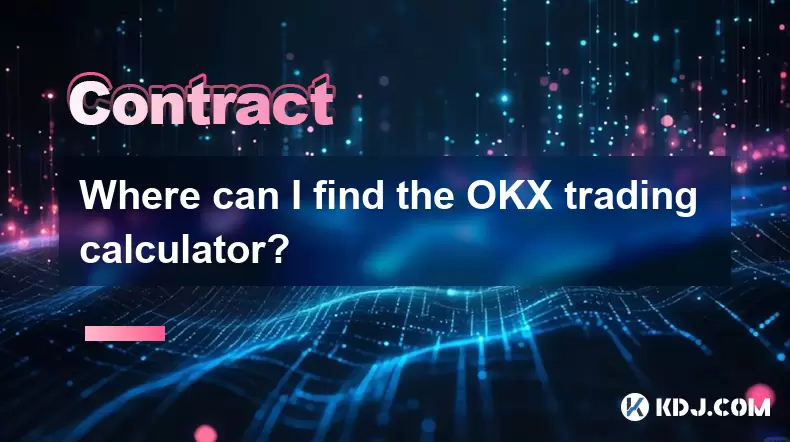
Where can I find the OKX trading calculator?
Aug 08,2025 at 07:49am
Understanding the OKX Trading Calculator FunctionalityThe OKX trading calculator is a powerful analytical tool designed to assist traders in estimatin...
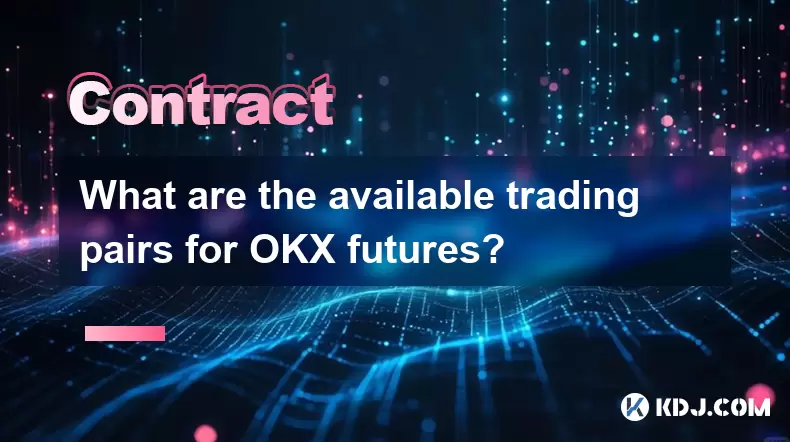
What are the available trading pairs for OKX futures?
Aug 08,2025 at 08:49am
Understanding OKX Futures Trading PairsOKX is one of the leading cryptocurrency derivatives exchanges, offering a wide range of futures trading pairs ...
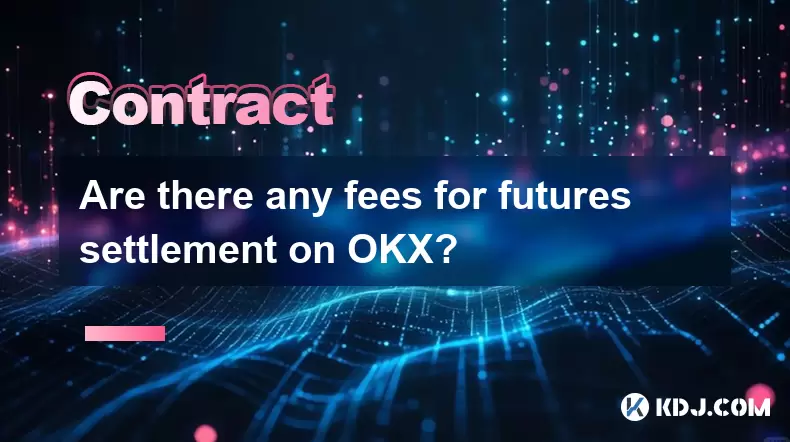
Are there any fees for futures settlement on OKX?
Aug 08,2025 at 05:35am
Understanding Futures Settlement on OKXFutures settlement on OKX refers to the process by which open futures contracts are automatically closed or mar...
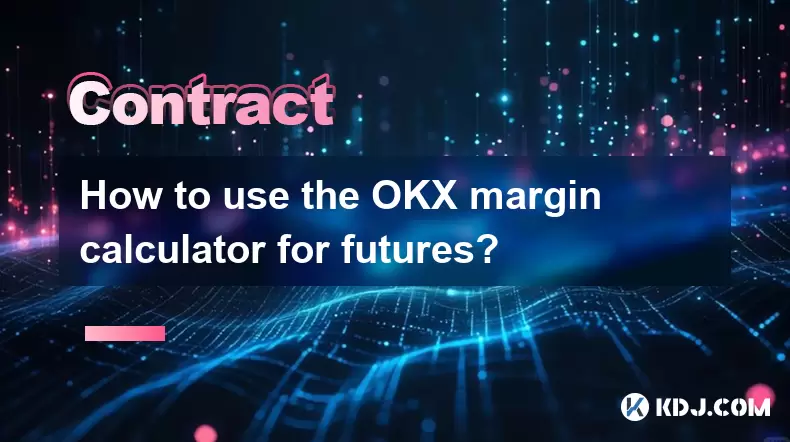
How to use the OKX margin calculator for futures?
Aug 08,2025 at 05:15am
Understanding the OKX Margin Calculator for FuturesThe OKX margin calculator is a specialized tool designed to assist traders in estimating the requir...

What are the specific maker and taker fees on KuCoin Futures?
Aug 08,2025 at 08:28am
Understanding Maker and Taker Fees on KuCoin FuturesWhen trading on KuCoin Futures, users encounter two primary types of fees: maker fees and taker fe...

What is the minimum deposit for OKX contracts?
Aug 08,2025 at 07:00am
Understanding OKX Contract Trading BasicsOKX is one of the leading cryptocurrency derivatives exchanges, offering a wide range of perpetual and future...

Where can I find the OKX trading calculator?
Aug 08,2025 at 07:49am
Understanding the OKX Trading Calculator FunctionalityThe OKX trading calculator is a powerful analytical tool designed to assist traders in estimatin...

What are the available trading pairs for OKX futures?
Aug 08,2025 at 08:49am
Understanding OKX Futures Trading PairsOKX is one of the leading cryptocurrency derivatives exchanges, offering a wide range of futures trading pairs ...

Are there any fees for futures settlement on OKX?
Aug 08,2025 at 05:35am
Understanding Futures Settlement on OKXFutures settlement on OKX refers to the process by which open futures contracts are automatically closed or mar...

How to use the OKX margin calculator for futures?
Aug 08,2025 at 05:15am
Understanding the OKX Margin Calculator for FuturesThe OKX margin calculator is a specialized tool designed to assist traders in estimating the requir...
See all articles

























































































